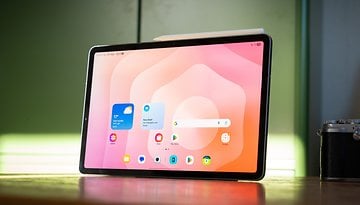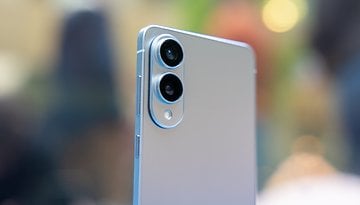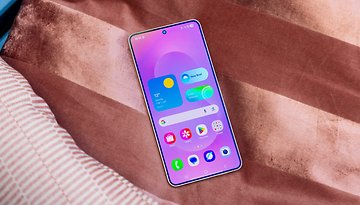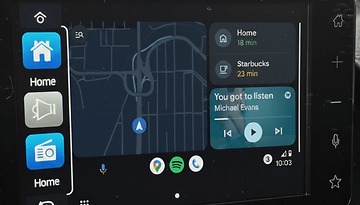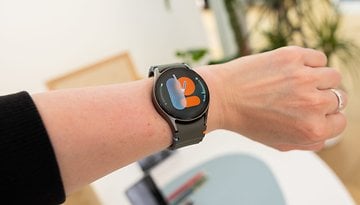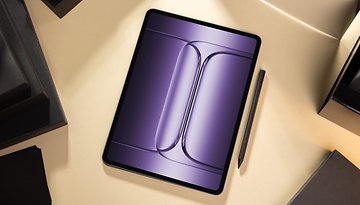Xiaomi Mi 11 review: The almost perfect flagship


The Xiaomi Mi 11 is the first Android smartphone with Snapdragon 888 to be released in Europe. With its fairly conservative price of €799 for a flagship, this places as a direct competitor to the Samsung Galaxy S21. Is the Xiaomi Mi 11 a Galaxy S killer? The verdict is at the end of my full review of the Xiaomi Mi 11 on NextPit.
Good
- Superb 120Hz WQHD+ AMOLED display
- 480Hz touchscreen sampling rate
- The all-powerful Snapdragon 888 chipset
- Solid battery life and 55-watt fast charging
- 50-watt wireless charging support
- 108 MP sensor camera
- Neat and simple design
- Charger is included
- Relatively affordable price for a flagship
Bad
- Camera module is not very versatile
- No dedicated telephoto lens
- Overheating problems with heavy use
- No IP certification
- No microSD port

My brief opinion on the Xiaomi Mi 11
The Xiaomi Mi 11 is without question a flagship, high-end smartphone. It's not a half-hearted or sloppy attempt to offer a cheaper, less premium alternative to the high-end Android market that is currently being helmed by the likes of Samsung and Oppo.
The Xiaomi Mi 11 has been available since March 9 in two memory configurations with 8/128 GB or 8/256 GB, featuring a recommended retail price of €749.90 and €799.90, respectively. It is €110 cheaper than the Samsung Galaxy S21, which carried a sticker price tag of €859 upon its release.
The Xiaomi Mi 11 is also the first Android smartphone in Europe to feature Qualcomm's Snapdragon 888 SoC, making it one of the most powerful smartphones on the market today. So powerful that during the benchmark tests, some of the results were inconsistent as it was too fast for its own good!
It also offers one of the best 120Hz Amoled and WQHD+ displays that I've come across so far in my reviews, all the while offering a decent battery performance with 55-watts fast charging capability and get this - 50-watts wireless charging capability. The triple 108 MP camera module is effective, although it lacks some degree of versatility. Do note that when you push the smartphone to its limits in terms of performance, there is a very high tendency of it overheating.
For less than €800, you end up with a well-balanced and not overpriced flagship smartphone that is not free of flaws but does very well across the board. I'll stop giving away everything; let's dive into this review!
Premium design has its flaws
The Xiaomi Mi 11 features an ultimately fairly classic design that revolves around the trifecta of glass back+metallic edges+curved screen. This configuration of materials happened to be the standard for every flagship until the middle of last year, where Samsung and Oppo began rolling out what is coined by many as vegan leather or polycarbonate (that's a fancy word for PLASTIC!!!!!) devices with flat screens.
In short, I liked it for the:
- curved display
- matte glass back
- original looking camera module
I didn't like it because:
- no microSD port or IP certification
- unnecessarily visible prints at the back of the device
- volume and power buttons could be more responsive
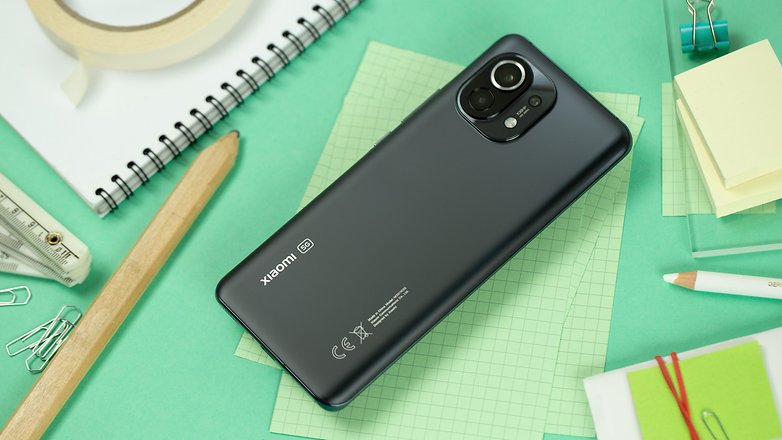
I respect all beliefs and almost all tastes, without validating or endorsing them. But personally, I really liked this mix between a back-to-basics form factor alongside a curved display and the glass back that sports a modern look courtesy of the matte surface as opposed to the fingerprint magnet option of glass.
The back may be matte in nature, but it still reflects plenty of light during the day. This is no to detract from the device, as this effect is far nicer with a blue shade on the smartphone, which we, unfortunately, did not receive. But even on this black version, I was seduced by the bluish or even silver tints that the Mi 11 showcased at the back, creating an interesting contrast with the smooth matte surface.
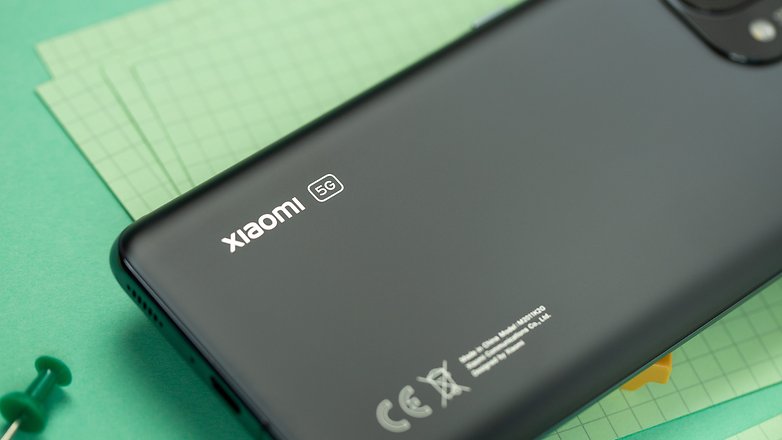
The manufacturer managed to optimize the form factor of the Xiaomi Mi 11 considering how it is lighter (196 vs. 208 grams) and thinner (8.06 vs. 9 mm thick) than its predecessor, the Xiaomi Mi 10 while sporting a larger viewing area. This feat by Xiaomi was accomplished by reducing the battery size - which in hindsight, is not such a good idea.
On the other hand, I really wish Xiaomi would stop giving such prominence to the "CE" logo or the crossed-out trash can logo for electronics. Yes, you can see that Xiaomi has made an effort by opting for a "discreet" font that fills out the negative spaces and a silver shade, but it's still hard on the eyes especially when you're talking about a flagship here.
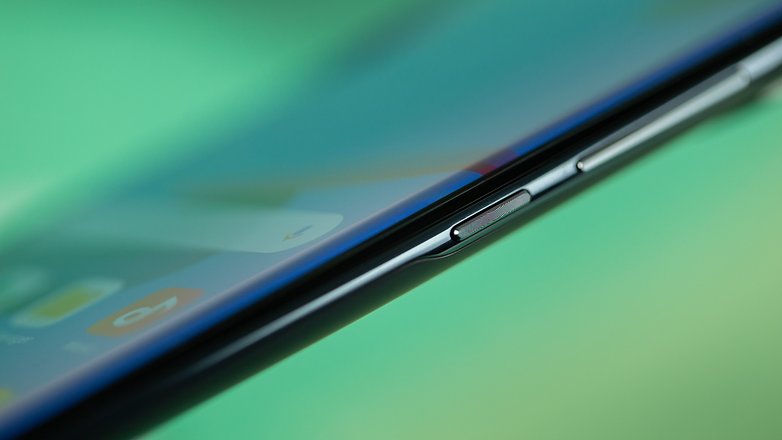
I also liked the look of the triple camera module on the back. It is housed in a "Squircle" shaped island. Yes, this word exists and denotes a half-circle, half-square shape. This Squircle (you won't stop me from making the most of this word that I just learned by overusing it), is composed of three layers that are on top of each other, each hosting a segment of the photo module, with the main 108 MP sensor right at the top of this "pyramid."
Just like any other flagship worth its salt today, there is no 3.5mm jack here. What's even more unfortunate is the lack of a microSD memory card slot as well as any kind of waterproof (IP) certification.
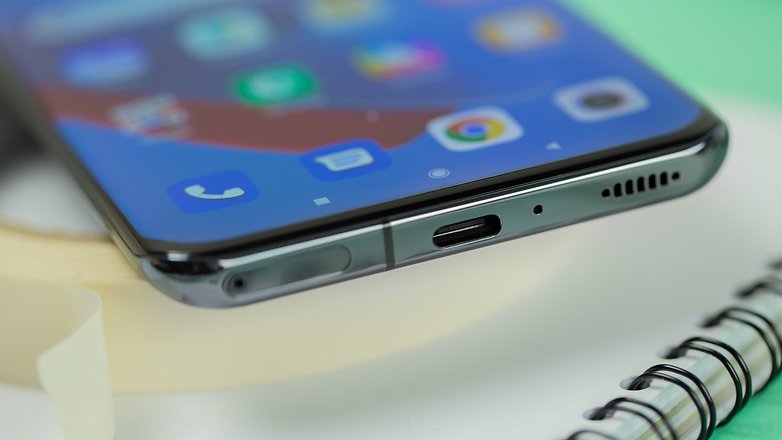
If it weren't for the obvious silver prints on the back and the slightly loose volume and power buttons on the right side, the finish is quite worthy of a premium smartphone. The lack of IP certification, however, is hard to excuse at this price point. The Xiaomi Mi 11's design is therefore successful but imperfect for a flagship-class device.
A sublime 120 Hz/WQHD AMOLED display
The Xiaomi Mi 11 features a 6.81-inch AMOLED panel with WQHD+ resolution of 3200 x 1440 pixels, which sports a pixel density of 515 ppi, with a 20:9 aspect ratio. The Xiaomi Mi 11's display supports HDR10+ and offers a 120Hz refresh rate.
In short, I liked the:
- 120 Hz refresh rate
- WQHD+ resolution
- 480 Hz touch sampling rate
I didn't like the:
- adaptive WQHD+ resolution
This is one of the best screens on the market today according to almost all my fellow reviewers. Personally, I don't have the tools or the expertise to make the same observation. However, simply by looking and feeling my way around, I can certainly resonate with this impression.
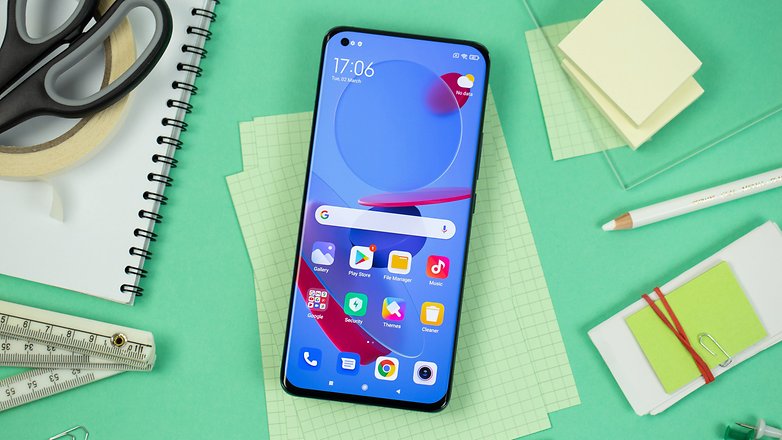
You can choose between a 60Hz and 120Hz refresh rate for the display, with the 120Hz option working dynamically. However, it is not as dynamic as Samsung's Dynamic AMOLED 2X. The Mi 11's display still displays 120 FPS across the UI and all system apps, but it reverts to 60 Hz when the image is static in order to preserve battery life.
Otherwise, the display runs at 120Hz for most apps and games, and at 60Hz for Netflix, YouTube, Prime Video, the default Mi Video player, and some games. You can see for yourself by enabling Android 11's native FPS counter via developer options.
One last detail that I also really liked was the touch sampling rate, which is the number of times per second the display registers a touch. The Xiaomi Mi 11 offers a 480Hz rate, which is better than the Asus ROG Phone 5, the newest gaming smartphone to be released in 2021 to date.
The responsiveness and smoothness of touch controls in mobile games is simply excellent. This is a detail that not many users will notice, but I really have to take my hat off to Xiaomi for their effort.
Overall, I really enjoyed, if not loved, checking out the Xiaomi Mi 11's display throughout my review. It's a really very strange thing to say but both smoothness and definition play a vital role in whether or not a smartphone feels premium. My OnePlus 8T's panel, which I use as my daily driver, looked very dull for comparison.
Snapdragon 888 is all-powerful, if not too powerful
The Xiaomi Mi 11 is the first Android smartphone (announced) to ship with the Snapdragon 888, the latest high-end and 5G SoC from Qualcomm. So this also makes it the first smartphone with a Snapdragon 888 chipset that I have had the opportunity to review. It goes without saying that there were very high expectations of it from me when it came to the Xiaomi Mi 11's performance.
The Snapdragon 888 has an octa-core processor with one ARM Cortex-X1 core clocked at 2.84GHz, three ARM Cortex-A78 cores clocked at 2.4GHz, and four ARM Cortex-A55 cores clocked at 1.8GHz. The GPU is Qualcomm's Adreno 660.
In short, I liked it because:
- Solid raw performance
I didn't like the:
- tendency to overheat
- stability concerns (framerate)
On paper, the Xiaomi Mi 11 is supposed to be one of the most powerful Android smartphones on the market today. And that is indeed the case in most situations, although I must say that there is a "but" buried beneath it somewhere. Let's begin with the positives though: the Xiaomi Mi 11 is sometimes too powerful for some graphics benchmarks to keep track of.
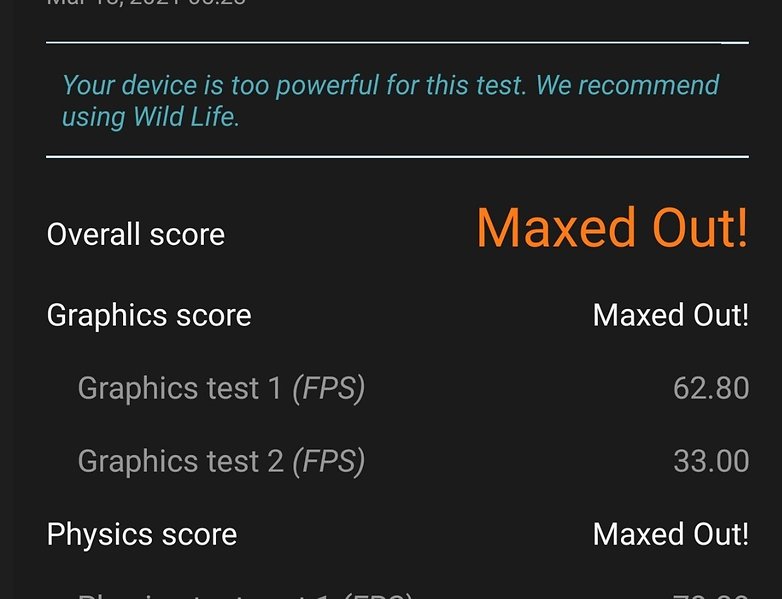
Thus, almost all of 3DMark's test scenarios are unusable because it claimed that "the device is too powerful", as you are informed as such via the in-app notification. This is the first time such a thing has happened to me. I know, it is totally silly but this admission of benchmark weakness against my all-powerful smartphone did make me beam proudly. It is akin to the sound of a bell ringing when you're playing with a mallet at a carnival, attesting that at that moment, at that precise place, you're the strongest in town!
Yes, I know it's stupid, but you have been forewarned. Give me just these five minutes to dream. The fact is, on paper, the Xiaomi Mi 11 scores very well and logically outperforms other high-end Android SoCs in most cases. Even when it is lined up against the Samsung Galaxy S21 Ultra's Exynos 2100, the Huawei Mate 40 Pro's Kirin 9000 and with less RAM, the Xiaomi does very well in terms of raw performance.
Xiaomi Mi 11
| Benchmarks | Xiaomi Mi 11 | Samsung Galaxy S21 Ultra | Asus ROG Phone 3 | Huawei Mate 40 Pro |
|---|---|---|---|---|
| 3D Mark Sling Shot Extreme ES 3.1 | Not tested | 7373 | 7724 | 8093 |
| 3D Mark Sling Shot Vulkan | Not tested | 5175 | 7079 |
5217 |
| 3D Mark Sling Shot ES 3.0 | Not tested | 7291 | 9833 |
9920 |
| Geekbench 5 (Single / Multi) | 1085/3490 | 942 / 3407 | 977 / 3324 | Not tested |
| Memory PassMark |
26.333 | 31.752 | 28.568 |
Not tested |
| PassMark disk |
120.430 | 81.108 | 124.077 |
Not tested |
BUT...we must now return to earth and address the biggest grievance that I have with this smartphone: overheating. While most of 3DMark's tests didn't work on the Xiaomi Mi 11 because it was too powerful, 3DMark's Wild Life and Wild Life Stress Test benchmarks did.
These two tests simulate intense gaming use on the smartphone over a short time (1 minute) for Wild Life and over a long session (20 minutes) in the Wild Life Stress Test. The whole point is to see how well the smartphone is able to maintain a consistent level of performance in an "extreme" scenario.
And that's where the Xiaomi Mi 11 fails miserably. While the scores I obtained are very good and superior to gaming smartphones like the Lenovo Legion Duel or the Asus ROG Phone 3, it falls flat on its face in the long run. Nobody is going to play games for just 30 seconds or a minute, people are expected to spend far longer than that. Both stability and temperature control really leave something to be desired in the Xiaomi Mi 11. At the end of each of the 3 sessions that I launched, separating them by 15 minutes each, the Xiaomi Mi 11 consistently displayed an overheating alert, even interrupting one of the benchmarks halfway.
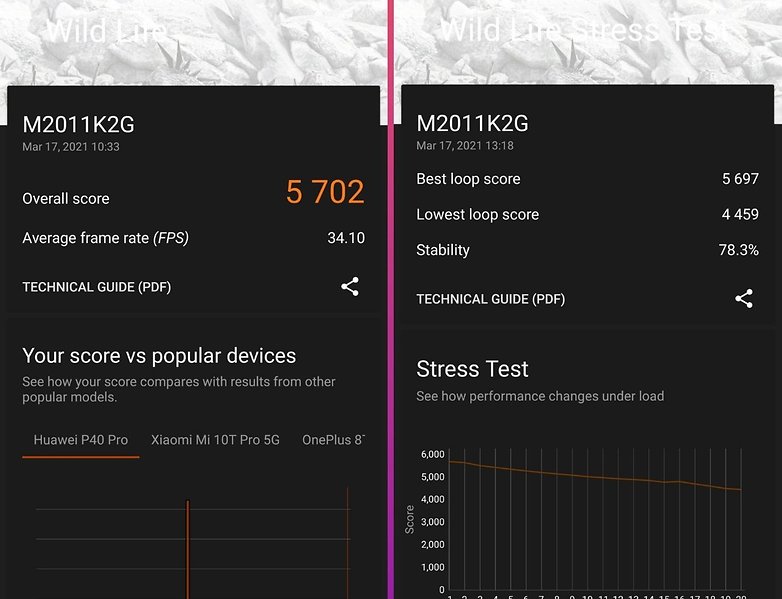
Over a short period of time (1 minute) in the Wild Life test, the Xiaomi Mi 11 manages to maintain a constant temperature of 29°C, which is rather normal given the duration of the test. But even "cold" the framerate is anything but stable, noticeably oscillating between 24 and 42 FPS.
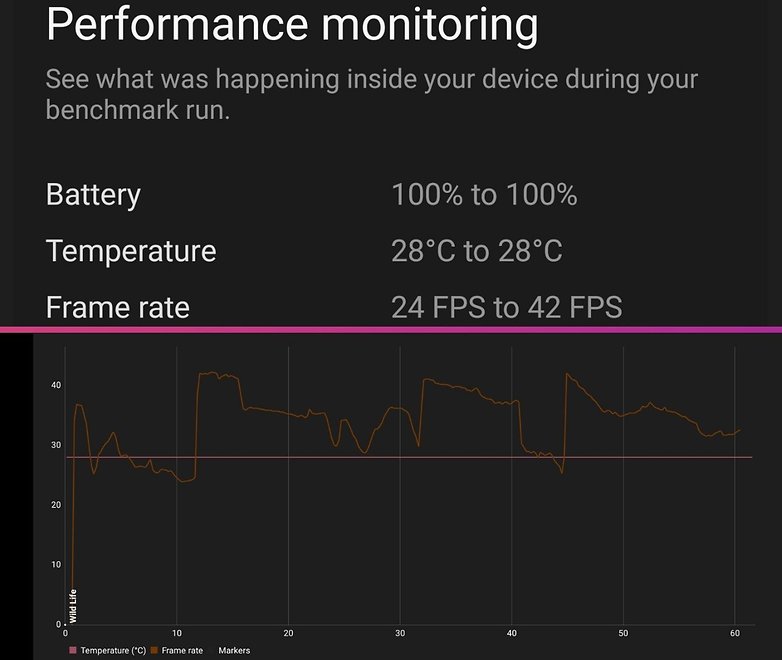
The real problems show up after intensive and prolonged use as simulated by the Wild Life Stress Test. We can see the impact of thermal throttling in full force here. In other words, the Xiaomi Mi 11 starts to limit its performance so that it does not end up as a heated mess.
We can see a very clear difference in performance between the first loop of the test (Loop 1) and the last (Loop 2) with the temperature soaring continuously to 53°C. As for the framerate, it varies between 19 and 41 FPS. I don't blame the smartphone for heating up, I blame the poor heat management in the design and engineering department that resulted in such poor results.
I've seen many more experienced and competent reviewers than me forgive such shortcomings in Xiaomi's device, claiming that within a "normal" range of use, there are no performance issues to be concerned about. And that is true, I reviewed the Xiaomi Mi 11 using my usual roll call of games (Call of Duty Mobile, Sky: Children of the Light, Genshin Impact) and I didn't notice any slowdowns or serious framerate drops as long as I didn't go beyond the hour mark.
But you certainly can feel the heat in your hands. And for a high-end smartphone that's supposed to be one of the most powerful on the market, this surely affects its reputation. I haven't taken the smartphone apart, but I'm sure the cooling chamber if there is one, must be too narrow to effectively dissipate generated heat properly to control the temperature within acceptable limits.
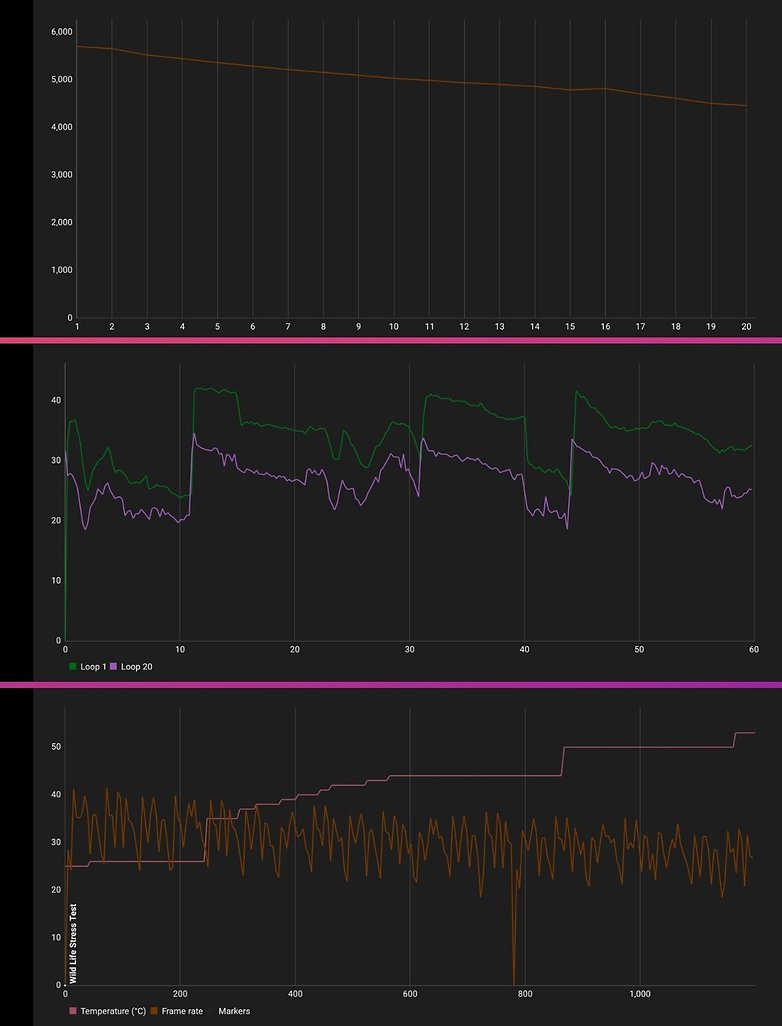
Overall, I can't say that the Xiaomi Mi 11 is not a capable smartphone. All mobile games run at high FPS with the graphics settings pushed to the max. It is indeed one of the most powerful Android smartphones on the market today. But I also can't say that I wasn't disappointed by the stability and especially temperature control issues that hurt performance and are inexcusable on a smartphone that is supposed to be a flagship.
A Mi-tipped photo module
The Xiaomi Mi 11 features a triple camera module with:
- a 108 MP wide-angle main lens, f/1.9 aperture, 26mm equivalent, 1/1.33" (sensor size), 0.8µm (pixel size), with PDAF and OIS
- a 13 MP ultra-wide angle lens, f/2.4 aperture, 123˚ FOV and 1/3.06" (sensor size), 1.12µm (pixel size)
- A 5 MP macro lens, f/2.4 aperture, 1/5.0" (sensor size), 1.12µm (pixel size)
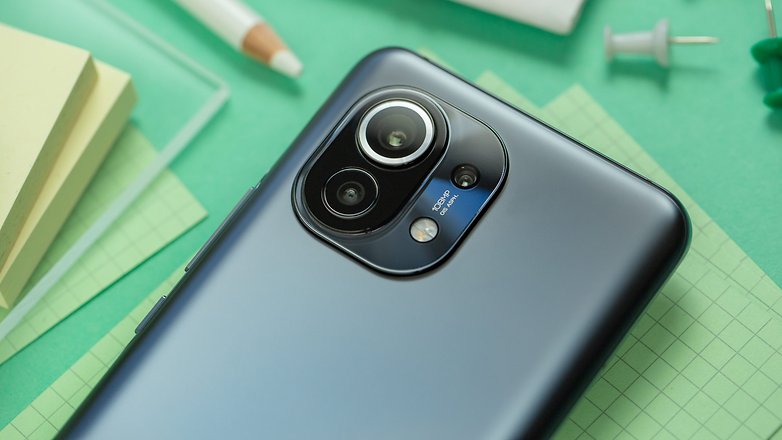
The camera module is very similar to last year's Xiaomi Mi 10, except for the missing 3D sensor that handles depth data.
In short, I liked the:
- 108 MP sensor and its good detail, low noise and natural colorimetry
- ultra-wide-angle lens that works great in daytime
I did not like the:
- purely digital zoom which is terrible beyond 2x
- fake "automatic" night mode that is inefficient
- lacking in versatility
Wide-angle photos on the Xiaomi Mi 11
During the daytime, the 108 MP main sensor obviously performs very well, as you've already read in countless other reviews of any other smartphone.
The sensor is the same one used on last year's Mi 10. So we find a Samsung Isocell Bright HMX with a Quad-Bayer RGGB filter (2x2), which means that the lens operates a pixel binning by a factor of 4. The final default resolution of the wide-angle photos is therefore 27 MP (108/4).

I found its photos to look rather natural, provided you turn off the "AI" mode that functions like scene recognition on a Samsung smartphone and saturates colors, creating shadows where there should not be any, etc. The colorimetry is quite faithful to what you see and the contrast is well-managed.

The 27 MP shots are also rich enough in sharpness and detail for a high-end smartphone. It's hard to tell given the gorgeous Berlin weather I enjoyed during my 10-day review, but the dynamic range would benefit from being wider, in my opinion.

The Mi 11 has a dedicated 108 MP mode for taking full-resolution photos. Personally, I don't see much use for it as the images had more noise and therefore have less detail than the 27 MP "pixel-binned" shots.
Ultra-wide angle photos on the Xiaomi Mi 11
The 13MP ultra-wide-angle lens is based on an OmniVision OV13B10 sensor that is usually found on more affordable models rather than on a flagship.
I found its performance to be quite decent. There's an immediate lack of consistency in color and dynamic range compared to wide-angle shots taken with the main sensor. But this is still very subtle, at least enough to not jeopardize the final result.


Apart from these colorimetry and dynamic range concerns, I have to commend the camera performance by mentioning the level of detail captured which remains above average in a smartphone that falls under this price range. I also noticed a very, very slight distortion at the edges of the image but we are still light years away from any "fish-eye" effect, which is very good.

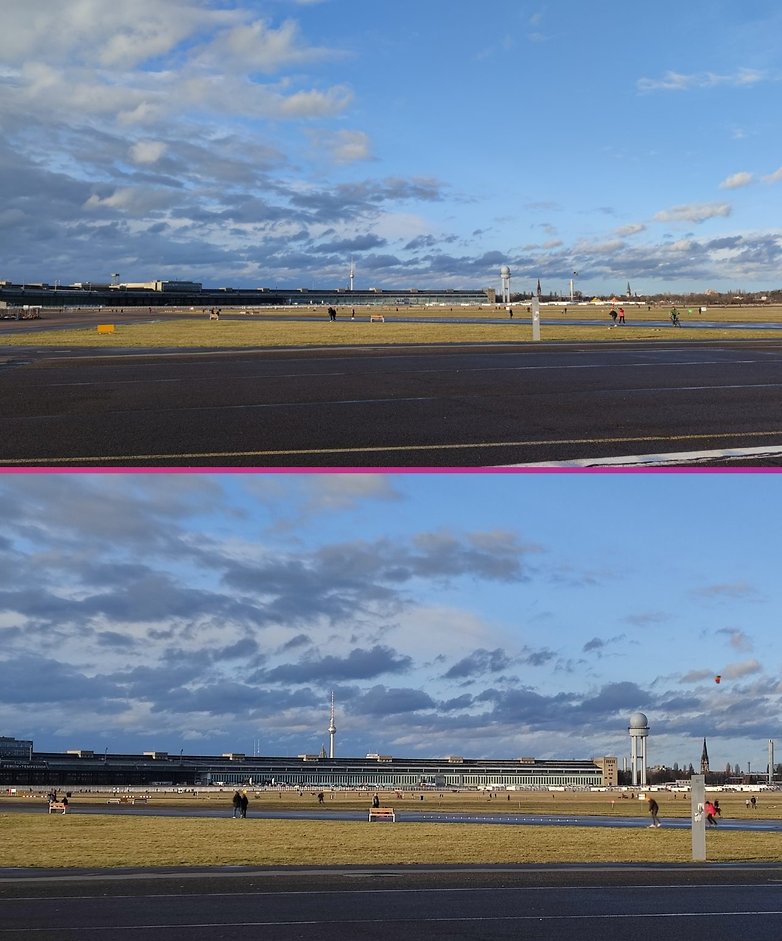
Ultra-wide angle photos are definitely darker, at least that's the impression given in most cases by the smaller dynamic range offered by this lens. It is a well-known "fault" of ultra-wide angle lenses that they tend to underexpose but even with the "AI" and "HDR" mode activated, I found that the shadows were overwhelming.

How about Xiaomi Mi 11's zoom photos?
Although the app offers 2x, 5x, 10x, and 30x zoom levels, the Xiaomi Mi 11 lacks a dedicated telephoto lens. I know that not everyone has fun zooming in on buildings/monuments for hours on end and that the presence of a telephoto lens is not an essential purchase criterion for a good user experience.
But I found it a real shame that almost all of my zoomed-in shots were barely usable, if not bad, the moment I went beyond 2x magnification.

If you look closely at the image above, even this East German woman from the '60s depicted on the famous Unser Leben mural, looks totally bummed out by the 30x zoom quality. Don't get me wrong, I'm well aware that a digital zoom inevitably leads to a loss of quality. But I expected much better, at least for the 5x zoom.

Google and its Super Res Zoom (it's not the only one to do it by the way) on the Pixel range of smartphones showed us that, on limited magnifications, a purely digital zoom could do the job very well. But Google's Super Res Zoom involves taking several shots and combining them to maximize the level of detail before cropping them to apply the zoom.
All in all, it is a very complex technique that I have simplified. You can read more about it in detail in this fascinating article from Google published at the time of the release of the Pixel 3, if you want to know more. Xiaomi did not use this technique since the Mi 11 just does a simple "crop & upscale". In other words, cutting and cropping the image. And the result shows clearly what a poor choice that was.

Xiaomi Mi 11 at night
At night, the Xiaomi Mi 11 does well, without being outstanding. The results are quite decent for a smartphone in this price range. I find that the digital noise remains rather contained. Admittedly, it is quite present on the bottom right image but this is a 10x zoom photo, so if you just stick to the main wide-angle sensor and 2x zoom, you should obtain decent results.

We are certainly far from proclaiming this as a champion in the night mode category and comparing it to Google's Pixels or Huawei photo-capable smartphones, but the shots are more than usable in most situations.
If you have the AI mode enabled, it will act as a scene recognition and, recognizing that it's darker than usual, will activate the night mode automatically if the ambient light level falls below what it deems is adequate.

On paper, it's kind of like what Apple has done since the iPhone 11. But in reality, it's a fake night mode that's anything but effective compared to the real dedicated night mode (well hidden in the "More" section of the photo app's menu). This mode requires the smartphone to remain totally still for almost two seconds in order to increase the exposure time. Short of a tripod, chances are you would bungle it with your own hands. The captured images remain too dark and lack sharpness.
The dedicated night mode also does a far better job in correcting the "flare" issue that occurs when the Xiaomi Mi 11 fails to manage strong light sources, such as streetlights in the city, which then overwhelms the image. The night mode helps to mitigate this effect in order to make the end result more acceptable.

Overall, I was a bit disappointed with the Xiaomi Mi 11's camera module for its lack of versatility. A wide-angle/ultra-wide angle duo with a macro on top is too little for a high-end smartphone that's supposed to be a flagship. The telephoto lens option is sorely lacking. On the other hand, I must note that, although limited in terms of possibilities, the photos taken with the Xiaomi Mi 11 were more than decent overall, except when zooming in.
Surprisingly strong battery life
The Xiaomi Mi 11 features a 4,600 mAh battery underneath the hood. This is slightly less than the Mi 10 with its 4,780 mAh battery pack but significantly more than the Samsung Galaxy S21 with a 4,000 mAh battery. The battery consists of two 2,300 mAh cells each for MMT fast charging.
As is often the case with a Xiaomi smartphone, I found battery life to be decent. Personally, I prefer to abuse the smartphone and enable the 120Hz refresh rate in WQHD+ resolution all the time. In this configuration, I lasted a full day on average, which numbered between 8 and 10 hours of screen on time. This meant I still had to plug the smartphone into a power outlet at the end of the day.
But Xiaomi offers many modes and options to preserve the Mi 11's battery life. With these modes enabled and turning on the adaptive refresh rate, I gained an additional half a day of usage. So you can easily last a day and a half, or nearly 20 hours.
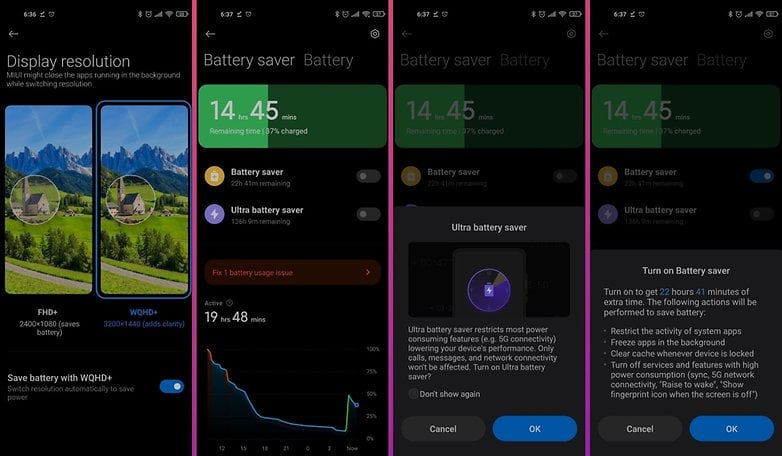
The Xiaomi Mi 11's battery supports 55W wired fast charging and 50W wireless charging, which is amazing, as well as 10W reverse wireless charging.
The USB-C charger was part of the bundle in the box. I checked on the official store as to whether this is a standard issue, but there was no specific information about it. During the European launch of the smartphone, Xiaomi had confirmed that the Mi 11 would be sold with a charger included, and on average, it only took me 45 minutes to get a full charge from 0% via wired charging.
Overall, I found the battery life of the Xiaomi Mi 11 to be decent. The smartphone stands up well to the torments of its power-hungry spec sheet like the 120Hz refresh rate and WQHD+ AMOLED display. I was always calm when I went out to do my photo tests, knowing that this handset could last at least a full day outdoors. The power saving modes are quite effective and can provide you an additional half a day of use. It is not the most long lasting smartphone on the market but it does better than some of its competitors like the Samsung Galaxy S21.
Technical data and other details
In addition to the full specifications sheet of the Xiaomi Mi 11, I will also list some things about the smartphone that I didn't feel it relevant to cover in detail in my review :
- the Xiaomi Mi 11 runs on MIUI 12 that is based on Android 11. This is the first Xiaomi smartphone to be released with Android 11 right out of the box. But the MIUI 12 interface is not so new and we already know it well. You can refer to my full MIUI 12 review for more information.
- you can shoot in 4K at 30/60 FPS, 1080p at 30/60/240 FPS with automatic HDR and gyro EIS (video stabilization)
- the photo application offers several modes or filters such as SuperMoon (to shoot the Moon) or Document to scan documents
- you can apply "Movie effects" filters to your videos like MagicZoom, Slow Shutter, Time Freeze, Time Lapse, or Parallel World to zoom in progressively, apply light and flare effects or create a double video and overlay the two symmetrically
- the Xiaomi Mi 11 offers a gaming mode that is rather limited, but which you can access in-game by swiping right from the top left corner (with the smartphone in landscape mode)
Xiaomi Mi 11
| Specs | |
|---|---|
| Screen | 6.81 inch / 120 Hz / WQHD+ / HDR10+ / Gorilla Glass Victus |
| SoC | Qualcomm Snapdragon 888 with Adreno 660 |
| Memory | 8 GB LPDDR5 / 128 or 256 GB UFS 3.1 / no microSD slot |
| Main Camera | 108 MP f/1.9 / 1/1.33" camera |
| Ultra wide angle | 13 MP / f/2.4 / 123° field of view / 1/3.06". |
| Macro | 5MP / f/2.4 / 1/5.0" / Fixed focus |
| Selfie Camera | 20MP / 27mm / 1/3.4" |
| Video | 8K maximum at 30 frames per second |
| Connectivity | 5G / WiFi 6 / Bluetooth 5.2 / NFC / Infrared |
| Battery | 4600 mAh / 55 Watts fast charge / 50 Watts wireless / 10 Watts reverse charge |
| Colors | Grey / Blue |
| Price | €749.90 / €799.90 |
Conclusion
The Xiaomi Mi 11 is an excellent high-end smartphone. Its display simply blew me away even though I don't have the same scientific tools as my fellow reviewers. The WQHD resolution and 120Hz refresh rate should be a standard for a flagship and I can only applaud Xiaomi's effort on this handset.
The Snapdragon 888 also proved to be surprisingly good and I'm glad I finally got to review it. The Xiaomi Mi 11 is the first smartphone, which I held in my hands, to literally send a graphics benchmark packing. The in-game experience, with the 480Hz sampling rate that even gaming smartphones don't offer, proved to be a very compelling argument.
On the other hand, I have a bit of a problem with the "flagship" designation. I find that it no longer applies to basic high-end smartphones. Just like the Samsung Galaxy S21 is not the flagship of Samsung's high-end but rather the S21 Ultra, the Xiaomi Mi 11 is not Xiaomi's flagship smartphone, at least not for long since it should boast of a Pro model in due time.
These affordable "flagships" are obviously and without question high-end smartphones. But their more conservative price point of less than €800, also features some shortcomings or performance issues that are difficult to forgive on a product in this class. Whether it's design-related details or overheating problems that affect performance, the absence of IP certification, or a dedicated telephoto lens in favor of a macro lens, there is always something to nitpick on.
These are flaws that mar the premium side of the smartphone that is supposed, as a flagship, to be perfect. But that's just my cynicism kicking in. And for the average Joe who is just looking for a good (very good) value-for-money flagship, the Xiaomi 11 is definitely what a flagship should be and what a flagship should cost in 2021.




